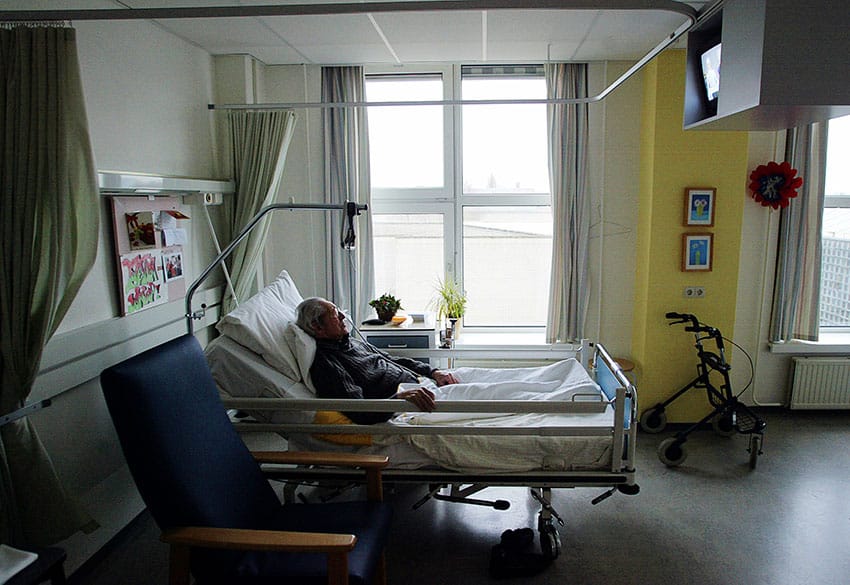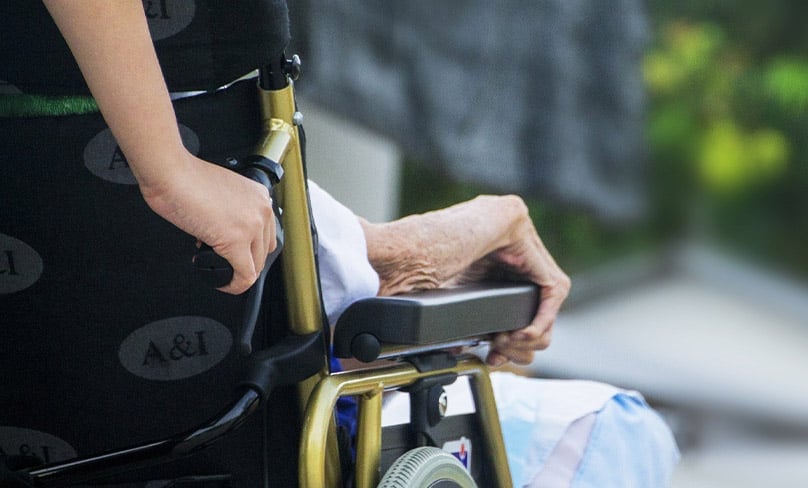
The legalised ending of human lives is spreading across the nation – the latest fad for virtue-signalling ignorant politicians. The Long March to end it starts here and now
The federal parliament last week paved the way for euthanasia and assisted suicide to be legalised in the Northern Territory and the Australian Capital Territory by overturning the 25-year ban on territories being able to make these laws.
The ACT Government will move to debate legislation next year, while the NT Government has indicated that it will wait until after the next election in August 2024. The result of last week’s vote is that the next three years will see euthanasia legalised across Australia.
Despite this, the fight against euthanasia is not over. If anything, our efforts against these laws need to be renewed in earnest.
Those on the side of life need to keep vigilant when it comes to attempts to widen the categories of people who are eligible for lethal drugs, while we simultaneously work hard to overturn these horrid laws. If we don’t keep a close eye on what is happening, the death toll will skyrocket.
Advocates for legalised killing always tout the so-called safeguards included in the legislation but as soon as the laws are passed, they work to remove them.
Just last week, on the first anniversary of New Zealand’s euthanasia law coming into effect, its architect – David Seymour MP – announced he was seeking to remove the requirement that a patient be terminally ill in order to access lethal drugs.
In making the announcement, he explained that the tight restrictions were needed to get the legislation through.
In doing so, he revealed a common tactic of euthanasia advocates: get the laws passed and then work to expand their reach.
The extension from terminally to chronically ill advocated by Seymour is also where Canada began. Canada’s laws then broadened to those with disabilities and, in four months’ time, will expand to those with mental illness alone.

Just a few days ago, the lead psychiatrists in all of Canada’s 17 medical schools signed a joint statement asking for a delay on allowing euthanasia for those who are suffering from mental illness alone, but the government at this point seems unmoved.
After all, euthanasia is saving the Canadian government a great deal of money.
The Canadian Parliamentary Budget Office has estimated that euthanasia for those with terminal illnesses is already saving the government $86.9 million annually in health care costs.
The expansion to those with only chronic illness was estimated to save an additional $62 million each year and, once expanded to those with mental illness only, the savings will jump even higher.
It’s not only health care costs that are relevant here. Euthanasia saves the government money in social welfare as well.
On Thursday of last week, retired Army Corporal Christine Gauthier who is in a wheelchair after injuring her back in a training exercise, testified that she was offered euthanasia by Veterans’ Affairs when she requested a wheelchair ramp be placed into her home. Her story is similar to other veterans, including one who was offered euthanasia when he sought treatment for post-traumatic stress disorder.
There’s also the case of Tracey Thompson, who has been unable to hold down a job for more than two years because of the effects of long COVID.
While her long COVID diagnosis does not qualify her for disability support, it does qualify her for euthanasia.
Tracey does not want to die but with no job and no social welfare, she cannot afford to live. She has said that for her, euthanasia is “exclusively a financial consideration.”

Then there’s Denise, who is confined to a wheelchair because of an injury six years ago and suffers from allergies to things like cigarette smoke and certain laundry chemicals.
Her social welfare payments are not sufficient to find her a smoke-free apartment, and so she too has applied for euthanasia. Denise said her euthanasia application was essentially about “abject poverty.”
There’s Madeline, who is one of 600,000 Canadians suffering from chronic fatigue syndrome.
Because only six Canadian doctors specialise in chronic fatigue, getting specialist help is near impossible for her.
Unfortunately for Madeline, the A$364 in support payments she receives each week are insufficient to cover the vitamin treatments that keep the symptoms at bay, and so she too is looking to euthanasia as an “out.”
Gwen was injured in a car accident and is now considering euthanasia because it is easier than getting appropriate care.
More than 10,000 people were euthanised in Canada last year alone, equating to more than one death every hour. And that’s before mental illness is added as a category.
What is happening in Canada right now is one of the greatest human rights violations of our time, and very few in Australia or anywhere else in the western world are talking about it because they do not want to show the ugliness of what euthanasia does to a society.
Australia has a legal system very similar to that of Canada, and heaven knows the euthanasia activists all follow the same playbook.
We may not be able to do anything to stop all Australian jurisdictions legalising euthanasia and assisted suicide now that the federal parliament has removed the barrier for the territories, but we can and must fight to stop them killing everyone who they consider too costly to treat. Otherwise, Australia is just a few years away from being Canada, and any one of us is a tragic accident away from being a victim.
Related Articles:
